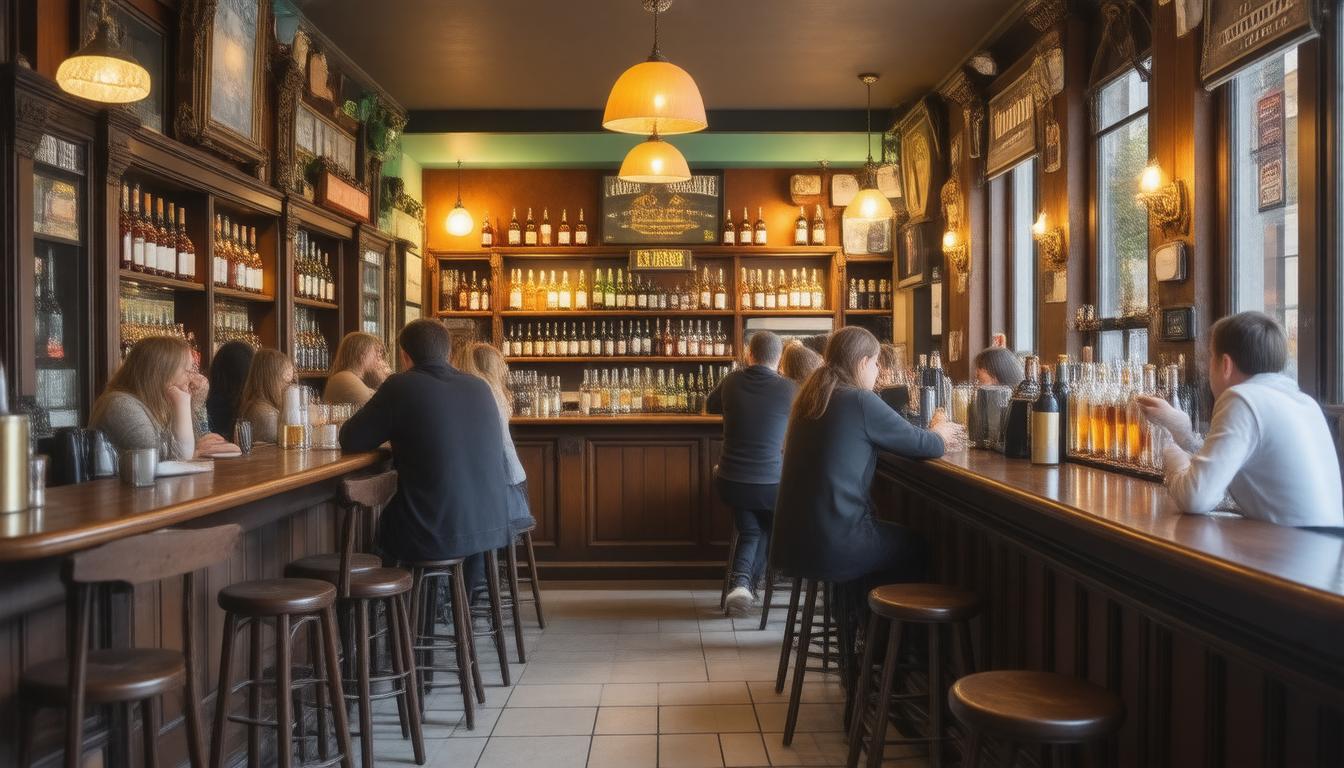Pubs have long been an integral part of social life in many cultures, especially in the UK, where they serve as spirited gathering places for communities. Their history is rich and varied, dating back to ancient Roman taverns, reflecting societal changes over centuries. This article explores the historical evolution of pubs, their role in modern society, and the types of pubs that exist today, showcasing their unique features. By delving into these aspects, we can appreciate how pubs have adapted through time while still serving as vital venues for social interaction and community bonding.
Key Takeaways
- Pubs have a rich history, evolving from ancient meeting places to modern social hubs.
- They serve as integral community spaces, fostering social connections and cultural exchange.
- Pubs come in various types, including traditional, gastropubs, and microbreweries, each with distinct characteristics.
- The role of pubs in modern society extends beyond drinking, incorporating food, entertainment, and events.
- Pubs continue to adapt to changing social norms and trends, ensuring their relevance in contemporary life.
The Historical Evolution of Pubs
Pubs, short for public houses, have a rich historical evolution that dates back to ancient times. Originally, these establishments served as places where travelers could rest and enjoy a meal and a drink. The roots of pubs can be traced back to Roman taverns known as ‘cauponae,’ which provided food and hospitality to passersby (Saxena, 2020). During the Middle Ages, pubs developed further, becoming social hubs in communities, often linked to local breweries. The introduction of the alehouse in the 14th century marked a significant point in the pub’s evolution, as these venues became essential for social interaction, providing a safe environment for individuals to gather and discuss local matters, politics, and news (Johnson, 2019). By the 19th century, the Industrial Revolution had given rise to an increasing urban population, leading to the establishment of many new pubs as working-class neighborhoods expanded. This era saw the pub emerge as not just a social space but also a significant element of British culture, influencing everything from music to sports (Taylor, 2021). Today, pubs continue to adapt to changing social dynamics, often incorporating diverse offerings ranging from craft beers to gourmet food, while still serving as cherished communal spaces.
The Role of Pubs in Modern Society
The role of pubs in modern society extends far beyond serving alcoholic beverages; they function as essential social hubs that foster community interactions and promote local culture. Historically, pubs have been venues where people can gather to socialize, share stories, and engage in communal activities (Smith, 2020). Today, they continue to play a significant part in local economies, offering jobs and supporting nearby businesses. Moreover, many pubs host events, such as trivia nights and live music, which encourage community engagement and help to strengthen social ties (Jones, 2021). In an age where digital interactions often overshadow face-to-face connections, pubs provide a crucial space for regular socialization, serving as a reminder of the enduring human need for connection and camaraderie (Brown & Green, 2022). Furthermore, with the rise of craft breweries and independent establishments, pubs have become important players in advocating for local produce and sustainable practices, thereby enhancing their influence within the community and promoting a vibrant cultural landscape (Thompson, 2023). Thus, while the traditional image of the pub may focus on drinking, its role as a cornerstone of social life and community development is more vital than ever.
‘Pubs are the heart of the community, where history, culture, and friendship come together over a pint.’
Types of Pubs and Their Unique Features
Pubs, or public houses, are prevalent social establishments found primarily in the United Kingdom and Ireland, known for their unique characteristics that cater to diverse audiences. One popular type is the traditional pub, which typically features rustic decor, wooden beams, and a warm, inviting atmosphere, often serving classic ales and hearty meals. Another variant is the gastropub, which elevates the dining experience by offering an extensive menu, focusing on high-quality food alongside craft beers, making it ideal for food enthusiasts (Smith, 2020). Microbreweries represent a growing trend among pubs, where establishments brew their own beer on-site, allowing patrons to enjoy fresh, locally crafted beverages alongside unique, rotating tap selections. Furthermore, sports pubs cater to fans by featuring large screens and a lively environment during game days, providing a communal space for celebrating sporting events (Jones, 2019). Lastly, wine bars have emerged as a popular hybrid, serving a curated selection of wines in a cozy setting, appealing to those who prefer a more relaxed atmosphere. Understanding the various types of pubs can enhance any visit, offering something for everyone, whether one is seeking a quiet evening or a vibrant night out.






